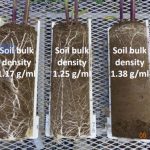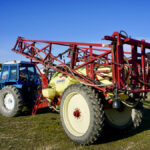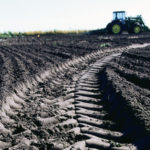Tag Archives Soil compaction

Compaction almost unavoidable during wet 2024 spring
It’s too early to fix most affected areas, best to wait until harvest

A soil health investigation
It took old and new technology to diagnose compaction as the culprit

Making the case for low-pressure tires and waiting out the wet
Last fall’s harvest weather increased compaction risk

Evaluating soil structure
OMAFRA Field Crop Report for the week of August 15

Three common soil compaction mistakes
Avoid these missteps to keep compaction from getting worse

Preventing sprayer compaction is difficult
Some compaction is inevitable, though severe damage can be mitigated

How to prevent compaction at harvest
Limiting damage starts with decisions when combines go into fields

How low can you go when it comes to tire pressure?
Tires can take lower pressure, but using low pressure to reduce compaction depends on farmer comfort level

Strategies for reducing compaction from wheel traffic
Ontario Field Crop Report for the week of September 9

Has the time come for integrated tillage management?
Understanding bulk density for compaction prevention


